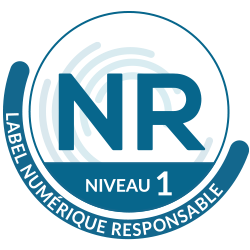A customer may ask a manufacturer to draw up a welding specification, including the WPS used for assemblies. In some cases, however, the welds to be produced do not correspond to the pre-existing WPS or WPS-P used to validate the PQR(s) held by the manufacturer.
In other words, the manufacturer has to draw up a new Welding Procedure Specification (WPS) representative of the assembly in order to comply with the customer’s request. In fact, one or more WPS can be drafted on the basis of the Domain of Validity (AV) of a Welding Qualification Record (PQR) held by the company.
A system for drafting and archiving WPS is essential in an environment under pressure from tight production deadlines.

A reminder of the stages involved in qualifying a WPS, and the PQR Validity Domain (DV).
To qualify a WPS, a standardized qualification coupon (in accordance with EN ISO 15614-1) or a pre-production assembly (in accordance with EN ISO 15613) must first be produced for inspection by a third-party organization. In some cases, other standards standardize the qualification of a WPS without a coupon, but we won’t cover them here for the sake of simplicity.
This control results in the qualification of a preliminary WPS (WPS-P) in the form of a Welding Procedure Qualification (PQR) including a Validity Domain (DV). This covers a wide range of diameters and thicknesses (but also materials, filler metals and other parameters).
Write the WPS based on the Validity Domain (DV) of a PQR
In this way, the coordinator can write a WPS adapted to the assembly based on the Validity Domain of a reference WPS. The term “reference” means that the WPS complies with the company’s qualified know-how and is suitable for one or more assemblies.
In addition, the PQR’s area of validity indicates the particular range within which the WPS can be drafted. Beyond this range, a new WPS and a new qualification are required.

Example of a DV drawn up under the American standard ASME Boiler and Pressure Vessel Code 2019, section IX table QW 451.1.
Source : weldingandndt.com
In this example, the DV is represented in the form of a table where the coordinator can find the thickness range for which a welding procedure can be qualified. He can then write his WPS within this range.
In practice, this task has to be put into perspective with the time constraints encountered by the Welding Coordinator in the company.
Problems with WPS drafting and tight production deadlines
The manufacturer’s business management deadlines are tight, i.e. production must be completed quickly after the order has been placed, which means less time for qualifying and preparing assemblies. This constraint puts considerable pressure on the interpretation of the Area of Validity (AoV) and the drafting of new WPS during the course of the project.
However, preparing the WPS would not be a problem if it wasn’t so time-consuming to write.
What’s so tedious about writing a WPS?
Everyone’s experience may vary when it comes to drawing up a WPS. Nevertheless, a WPS can be drawn up by process type, assembly type, position, grade, group, thickness, etc. An internal coding system can also be set up to help harmonize the company’s WPS library (see examples and testimonials on welders.com).
In fact, the DMOS library grows with each new customer order.
The questions that then arise are:
- What tools should you use to draw up your WPS? Excel to interpret areas of validity and edit WPS (perhaps Word for layout)?
- Write your WPS manually? Knowing that many WPS fields are redundant (position, group, commercial names of filler metals, etc.)?
- Which archiving method should I use? Paper or local server? How will this database be accessed, and who will be able to use and update it? Moreover, how can updates, verification and approval of these documents be traced?
As you can see, the aim here is to provide you with an efficient system for quickly retrieving your existing WPS from a solid database.
What is the most effective system for rapidly drafting a WPS that complies with the Domain of Validity (DoV) of a PQR?
A well-established system not only simplifies the drafting of your WPS, but also enhances the value of your know-how and saves you time in documenting welding procedures.
As we have already seen, this system is developed over time through the cohabitation of various tools.
However, the reality in the field will lead you to document errors, delays or the ordering of “sub-optimized” or “superfluous” PQR (i.e. PQR carried out without preliminary tests, at the same time as the flow of parts in the workshop).
A system like Welding Cloud lets you quickly write and archive WPS online, in EN ISO or ASME format, or as a customized template.
The functionality shown above demonstrates how the solution automatically writes an initiated WPS based on information from a reference PQR. The system selects the reference PQR by comparing the Domains of Validity (DV) in the library with the parameters of the assembly to be produced.
This automatic WPS generation makes it much easier to hand over the welding book to the customer or to your welders.
Linked to a welding book or written individually (WPS-P), you can edit your WPS in English, French, German and Italian.
Why choose Welding Cloud?
Welding Cloud by SIRFULL is a SaaS solution that requires no installation and can be deployed rapidly.
The SIRFULL team will support you directly at every stage of your project (deployment, training, guidance and support).




